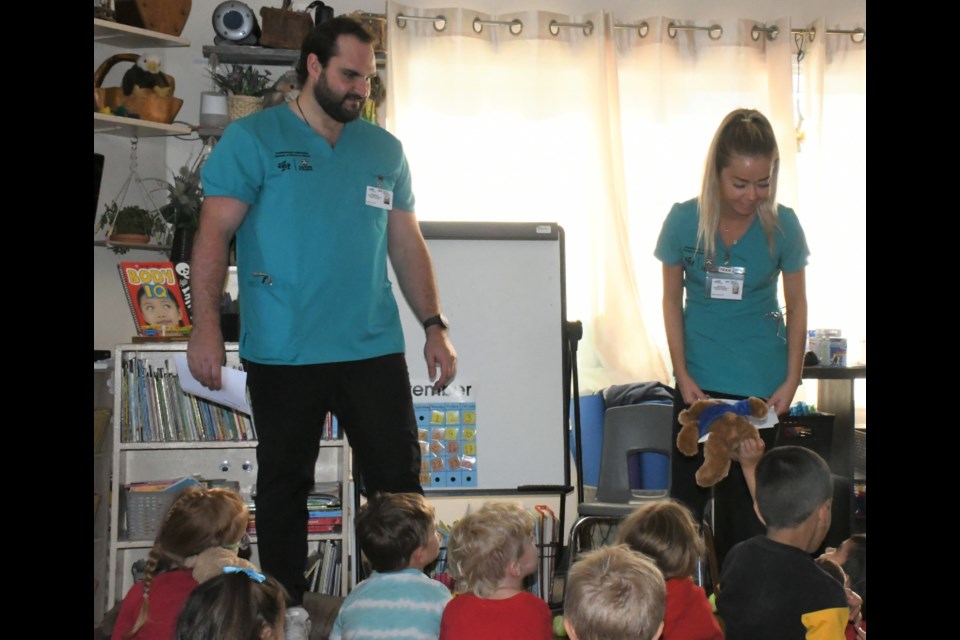Children at the Southwest Day Care and Early Learning Centre now better understand how to care for their teddy bears and stuffed friends — and what to expect during their own doctors’ visits — thanks to the help of two nursing students.
Kaleigh Yanke and Cole Hoffart, third-year students in the pediatric program through the Saskatchewan Collaborative Bachelor of Science in Nursing program between Saskatchewan Polytechnic and the University of Regina, visited the daycare recently as part of the teddy bear clinic.
The students taught the children how to apply bandages, use stethoscopes, use feeding tubes, and apply oxygen masks.
There were also stations where kids could have their animals checked with a stethoscope, look through a child-friendly microscope, and give their stuffed animals medicine through oral syringe dispensers.
Other topics the nursing students discussed were infection control, how to prevent becoming sick, what happens when one goes to a doctor and why a doctor is needed.
Southwest Day Care has held the teddy bear clinic for more than 15 years.
“We do the teddy bear clinic so if they go to a clinic or emergency centre, they can feel less anxiety when they go,” explained Breanna Kaytor, the course’s clinical instructor. “… (when) they meet a nurse, they (may) have to get medications or dressings.”
Nurses often give medications in syringes, so the fact that kids can play with toy syringes ensures they won’t be scared if they need one, said Yanke. Allowing them to play with all the plastic medical pieces ensures they become familiar with the tools used in hospitals or clinics.
Yanke and Hoffart agreed that visiting the daycare has been fun and enjoyable, with Hoffart saying it has been a new experience to work with children, while Yanke noted it has been great to play with them and be surrounded by them.
“We’ve been doing it for a long time. It’s just so important to our centre,” said Lucille Gilliland, executive director of the daycare. “We care for children that have complex medical needs and special needs here. So it’s wonderful to have the nursing students and share all their theoretical knowledge … .
“It’s just really beneficial; we really enjoy it.”
The nursing students visit the daycare twice a week for six weeks as part of their program, which is great because they provide extra support to children and parents, she explained. Furthermore, they have helped the daycare update its medical policies and procedures, so families are better served.
It’s “phenomenal” to have a male nurse at the daycare because that fact shocks most of the boys, who find it difficult to believe a man can be a nurse, Gilliland continued. Meanwhile, both students have done a great job teaching that nurses can be male or female.
“And also, some of our kids have had very major surgery — open-heart surgery, things like that — so it’s nice to have the nursing students come in and work with us, and the kids get so familiar with it … ,” she added.
Besides the daycare, there are other groups of nursing students at William Grayson and St. Agnes schools. There they observe the age groups and monitor the pupils’ development, said Kaytor.
“(This is) a different type of nursing. People don’t see this side of nursing,” she added. “They think nurses are just in the hospital.”




